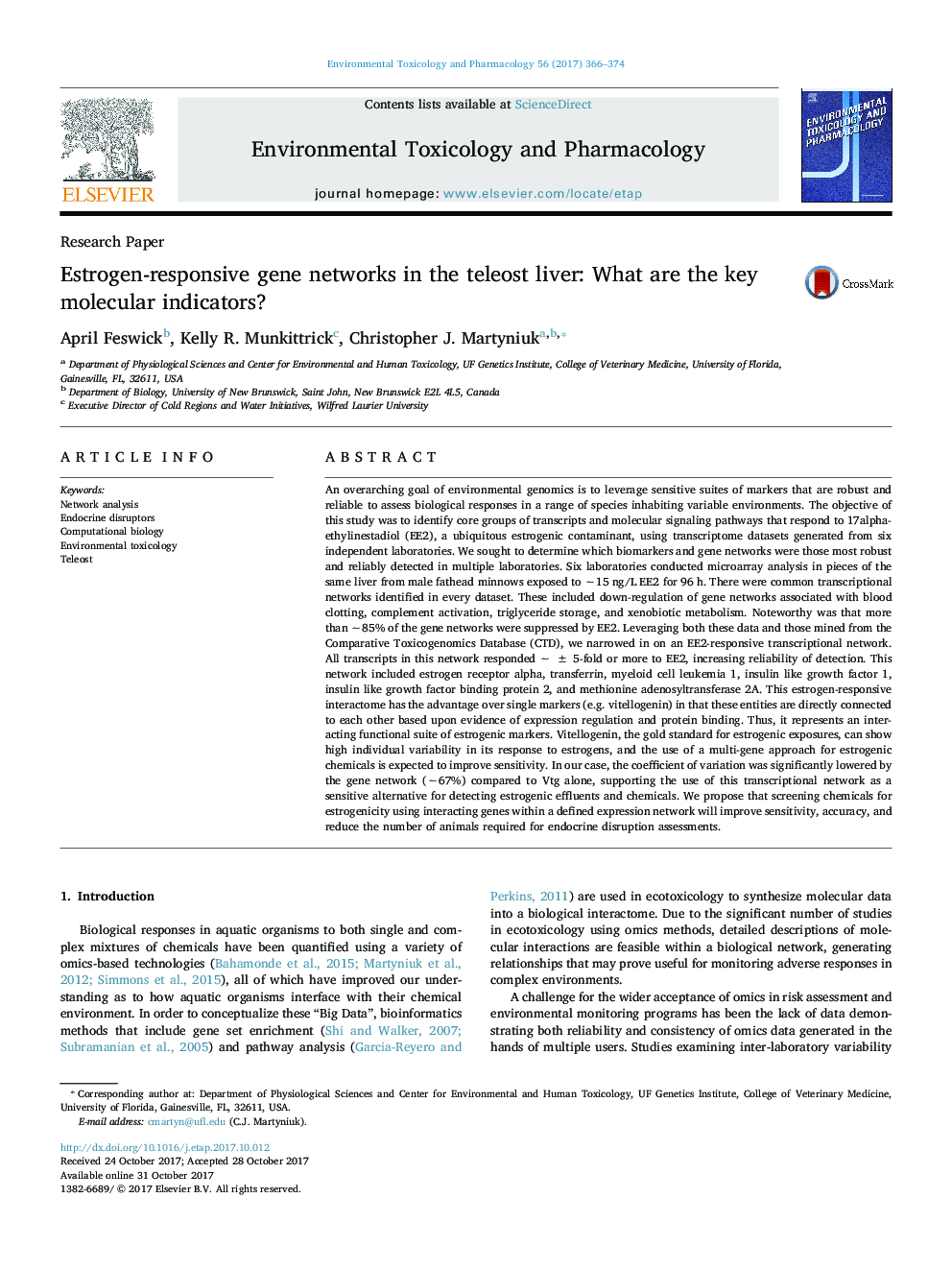| کد مقاله | کد نشریه | سال انتشار | مقاله انگلیسی | نسخه تمام متن |
|---|---|---|---|---|
| 8546106 | 1561688 | 2017 | 9 صفحه PDF | دانلود رایگان |
عنوان انگلیسی مقاله ISI
Estrogen-responsive gene networks in the teleost liver: What are the key molecular indicators?
ترجمه فارسی عنوان
شبکه های ژن پاسخگو استروژن در کبد تودوز: شاخص های کلیدی مولکولی چیست؟
دانلود مقاله + سفارش ترجمه
دانلود مقاله ISI انگلیسی
رایگان برای ایرانیان
کلمات کلیدی
موضوعات مرتبط
علوم زیستی و بیوفناوری
علوم محیط زیست
بهداشت، سم شناسی و جهش زایی
چکیده انگلیسی
An overarching goal of environmental genomics is to leverage sensitive suites of markers that are robust and reliable to assess biological responses in a range of species inhabiting variable environments. The objective of this study was to identify core groups of transcripts and molecular signaling pathways that respond to 17alpha-ethylinestadiol (EE2), a ubiquitous estrogenic contaminant, using transcriptome datasets generated from six independent laboratories. We sought to determine which biomarkers and gene networks were those most robust and reliably detected in multiple laboratories. Six laboratories conducted microarray analysis in pieces of the same liver from male fathead minnows exposed to â¼15 ng/L EE2 for 96 h. There were common transcriptional networks identified in every dataset. These included down-regulation of gene networks associated with blood clotting, complement activation, triglyceride storage, and xenobiotic metabolism. Noteworthy was that more than â¼85% of the gene networks were suppressed by EE2. Leveraging both these data and those mined from the Comparative Toxicogenomics Database (CTD), we narrowed in on an EE2-responsive transcriptional network. All transcripts in this network responded â¼Â ± 5-fold or more to EE2, increasing reliability of detection. This network included estrogen receptor alpha, transferrin, myeloid cell leukemia 1, insulin like growth factor 1, insulin like growth factor binding protein 2, and methionine adenosyltransferase 2A. This estrogen-responsive interactome has the advantage over single markers (e.g. vitellogenin) in that these entities are directly connected to each other based upon evidence of expression regulation and protein binding. Thus, it represents an interacting functional suite of estrogenic markers. Vitellogenin, the gold standard for estrogenic exposures, can show high individual variability in its response to estrogens, and the use of a multi-gene approach for estrogenic chemicals is expected to improve sensitivity. In our case, the coefficient of variation was significantly lowered by the gene network (â¼67%) compared to Vtg alone, supporting the use of this transcriptional network as a sensitive alternative for detecting estrogenic effluents and chemicals. We propose that screening chemicals for estrogenicity using interacting genes within a defined expression network will improve sensitivity, accuracy, and reduce the number of animals required for endocrine disruption assessments.
ناشر
Database: Elsevier - ScienceDirect (ساینس دایرکت)
Journal: Environmental Toxicology and Pharmacology - Volume 56, December 2017, Pages 366-374
Journal: Environmental Toxicology and Pharmacology - Volume 56, December 2017, Pages 366-374
نویسندگان
April Feswick, Kelly R. Munkittrick, Christopher J. Martyniuk,
